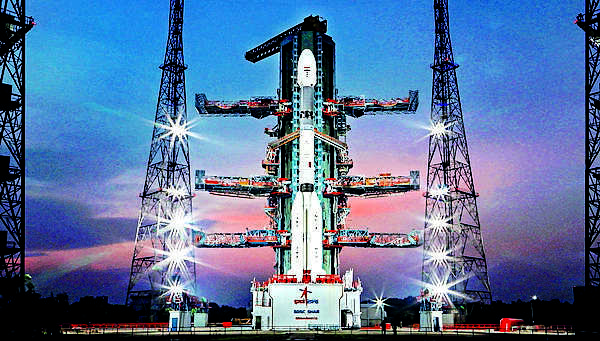SRIHARIKOTA: The Indian Space Research Organisation (Isro) on Monday placed NVS-01, the first of the five second-generation navigation satellite series, into a geosynchronous transfer orbit. The satellite, which will continue the services of the NavIC constellation, was placed by a geosynchronous satellite launch vehicle (GSLV-MkII), in its 15th flight.
Around 19 minutes after the rocket lifted off from the second launch pad at the Satish Dhawan Space Centre, Sriharikota, the 51.7m-tall, 420 tonnes three-stage GSLV-F12 placed the 2,232kg satellite at a 251km altitude. In the coming days, Isro scientists will perform manoeuvres by firing the onboard propellant to place the satellite in its final orbit.
Isro chairman S Somanath said the rocket achieved an orbit better than expected, which would give the satellite more life as this would save onboard fuel. The NVS-01 satellite had additional capabilities including providing new service in L1 band for civilians and carries a space-qualified rubidium atomic clock developed by Space Applications Centre, Ahmedabad.
“Earlier, we had only L5 and S-band and we were not given authorisations to use L1 and L2 band, which are being used in GPS for civilian services. We made a lot of effort to use L5 and S-band. But it is not a civilian frequency, so they had to put in additional chipsets. There were a lot of difficulties in adopting NavIC in the civilian sector. We have got the L1 band now. Once the remaining satellites are launched and L1 becomes fully operational, naturally all your mobile phones can be made compatible without any additional investment or cost to the manufacturer,” Somanath said.
On other upcoming missions, Somanath said they would be testing the crew escape systems of the Gaganyaan project rocket in July. After that, an unmanned Gaganyaan mission is planned for early next year. “We are getting ready for the test vehicle mission. We have to get the crew module and crew escape system. By July, we will integrate the systems with the rocket,” he said.
Somanath said the space agency is working on upgrading the payload capability of GSLV-MkIII or LVM3 rocket from 4 tonnes to 5.5 tonnes and is designing the next-generation launch vehicle (NGLV), which will be recoverable and expendable, for carrying much higher payloads.
Around 19 minutes after the rocket lifted off from the second launch pad at the Satish Dhawan Space Centre, Sriharikota, the 51.7m-tall, 420 tonnes three-stage GSLV-F12 placed the 2,232kg satellite at a 251km altitude. In the coming days, Isro scientists will perform manoeuvres by firing the onboard propellant to place the satellite in its final orbit.
Isro chairman S Somanath said the rocket achieved an orbit better than expected, which would give the satellite more life as this would save onboard fuel. The NVS-01 satellite had additional capabilities including providing new service in L1 band for civilians and carries a space-qualified rubidium atomic clock developed by Space Applications Centre, Ahmedabad.
“Earlier, we had only L5 and S-band and we were not given authorisations to use L1 and L2 band, which are being used in GPS for civilian services. We made a lot of effort to use L5 and S-band. But it is not a civilian frequency, so they had to put in additional chipsets. There were a lot of difficulties in adopting NavIC in the civilian sector. We have got the L1 band now. Once the remaining satellites are launched and L1 becomes fully operational, naturally all your mobile phones can be made compatible without any additional investment or cost to the manufacturer,” Somanath said.
On other upcoming missions, Somanath said they would be testing the crew escape systems of the Gaganyaan project rocket in July. After that, an unmanned Gaganyaan mission is planned for early next year. “We are getting ready for the test vehicle mission. We have to get the crew module and crew escape system. By July, we will integrate the systems with the rocket,” he said.
Somanath said the space agency is working on upgrading the payload capability of GSLV-MkIII or LVM3 rocket from 4 tonnes to 5.5 tonnes and is designing the next-generation launch vehicle (NGLV), which will be recoverable and expendable, for carrying much higher payloads.

